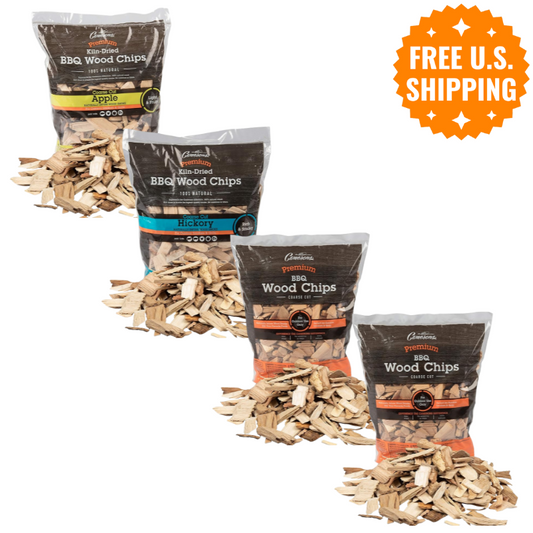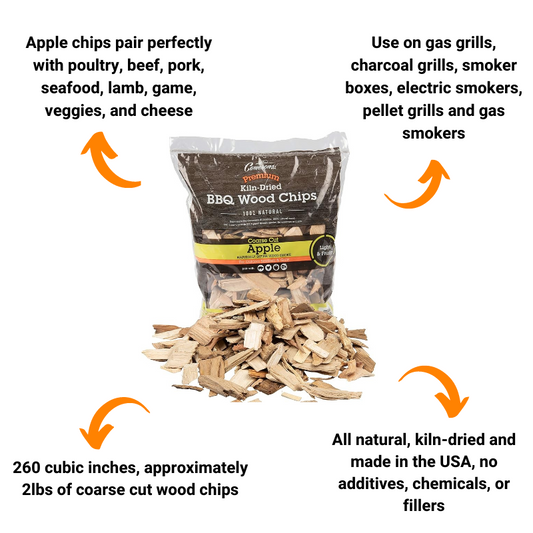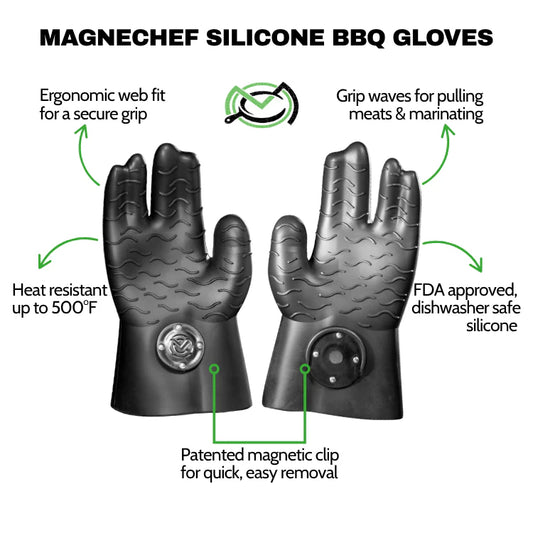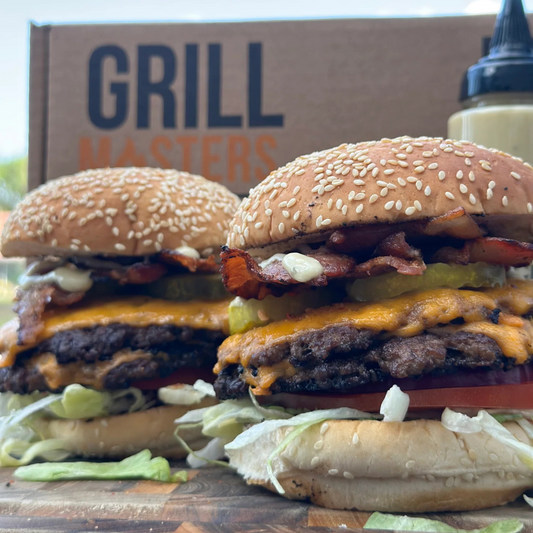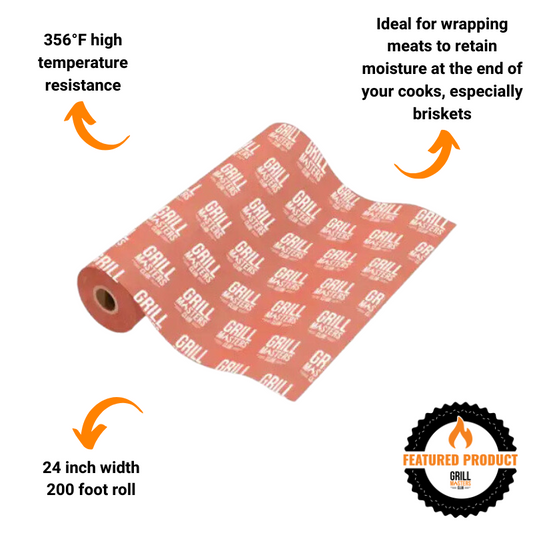How To Smoke Ribs (from Beginner to Expert) - The Ultimate Guide
Last Updated: October 14, 2025
Start low at 200–215°F to build smoke flavor, then finish at 240–250°F to render fat and set bark. Plan on 4–6 hours, spritz or mop every 45–60 minutes, and keep meat side up (meat side down only while wrapped). Choose well-marbled spare ribs, match wood to flavor (oak, hickory, pecan, almond), and glaze lightly in the last 15–30 minutes.
Table of Contents
Introduction to Smoking Ribs
Achieving that great taste of summer at your backyard barbecue with perfectly smoked bbq ribs may not come easy to you. That's OK because smoking ribs wasn't meant to be easy -- if it were, everyone would be doing it, right?
Don't despair!
With a bit of knowledge and a few tips on smoking ribs, you can rule the neighborhood's backyard BBQ scene.
Keep reading to boost your Grill Master skills, regardless of your current level of expertise!
These tips on smoking ribs are useful to everyone from first-time rib smokers to those who have been doing it for years.
We'll discuss the differences between beef and pork ribs, the different cuts of ribs, the various styles, the different techniques for smoking ribs, the best woods to use when smoking ribs and even answer some common questions that most people have when it comes to smoking your beef or pork ribs.

Knowing Your Meat: A Primer on the Types of Ribs
Differences in beef and pork ribs turn out to mainly be a matter of preference, however, some styles of ribs are better suited for the novice griller, while others are guaranteed to put your smoking technique and skills to the test.
After we explore the nuances below, you'll be in a much better position to choose the ribs that are best suited to you based on skill level, taste preferences, budget, and cooking equipment. Smoking ribs are in your future!
Beef Ribs vs. Pork Ribs
Beef Ribs
Beef short ribs require long, low-temperature cooking methods to retain their flavor and tenderness. Genetic factors and the older ages of cattle at slaughter mean more collagen, which enhances the meat’s rich, beefy depth. It's also important to note that in general, beef ribs are less forgiving than pork ribs — they demand patience and precision, challenging even experienced pitmasters.
If you’re tackling massive dino ribs (the king of backyard barbecue), set yourself up for success with the Beef Rib Boneyard Pro BBQ Smoking Bundle. This exclusive kit includes everything you need to master beef ribs — from prep tub and butcher paper to resting blanket, beef tallow, rubs, and sauce — all hand-picked by our pitmasters to help you achieve that perfectly rendered fat, bark you can knock on, and deep, smoky flavor.
Whether you’re cooking on an offset smoker or a pellet grill, this bundle gives you all the tools and flavor essentials to nail dino ribs every time — no guesswork required.
Pork Ribs
Typically, pork ribs are more common and less expensive. They’re also easier to master for beginners and offer incredible versatility — you can grill, smoke, or slow cook them with equally delicious results. The mild taste of pork allows your rubs, sauces, and smoke to really shine. Pork ribs also have higher marbling than beef, which keeps them moist and meaty during long, low cooks.
Ready to take your pork rib game to the next level? Check out the “Rack Attack” Rib Bundle: The Ultimate Rib Master’s Tool Kit — it includes everything you need to nail perfect pork ribs every time. From pro-grade prep tools and rib racks to flavorful rubs, sauces, and finishing accessories, this kit is built to help you achieve fall-off-the-bone perfection and Instagram-worthy presentation with ease.
Whether you’re smoking baby backs or spare ribs, this bundle gives you the complete pitmaster setup for seasoning, smoking, saucing, and serving pork ribs like a pro.
In many parts of the South, pork and barbecue mean the same thing — because, in the South, beef is not invited to the stage.
In a Thrillist survey, barbecue stars weighed in on the beef vs. pork debate to reveal: “Texans and those heavily influenced by the Lone Star State went beef (with one notable exception), and the rest of the Deep and mid-South voted hog.”
Still, Tiffani Faison of Sweet Cheeks Q says, “I don't think barbecue is totally about the choice of beef or pork, but more often about the quality of the animal, the choice of cut and execution of the cooking process.”
What Style of Ribs Do You Prefer?
The style of ribs also weighs in on your choice of what to smoke for your next neighborhood gathering. Some types of ribs only come from beef/cattle, others only from pigs. Some prove to be lean and others fattier.
Smoked Baby Back BBQ Ribs
Always pork, these favorites come from the lowest rib section on the back of the pig. Cut from this loin section, they are sometimes called loin ribs. Baby backs are shorter and offer smaller portions. They're less fatty, more tender, and more expensive than other cuts.
Smoked Short Ribs
Similar to pork spare ribs, short ribs are cut from the sixth to tenth rib (the front part) of beef cattle. The meat lies over, not between, the bones. They're also larger and fattier than spare ribs.
Smoked Spare Ribs
Cut from the chest or sternum under the belly around the side and behind the shoulder of cattle or pigs, spare ribs can be either beef or pork. Racks of spare ribs typically contain 11 to 13 bones and are the most inexpensive cut.
Common variations of spare ribs that you may have heard of, or be familiar with, include the St. Louis style and Kansas City style.
St. Louis Style Spare Ribs
For spare ribs to earn the designation of "St. Louis style," it's all about the preparation: The sternum bone, cartilage, and rib tips are removed, which results in a more uniform rack that's rectangular in shape.
Kansas City Style Spare Ribs
Kansas City-style spare ribs are very similar to the aforementioned St. Louis style, but with one minor difference: the cartilage is left on the rack.
Smoked Country Style Ribs
While their name seems to imply otherwise, these “ribs” are actually just pork loin sliced into strips. Taken from the blade end of the pork loin (behind the upper shoulder butt), country-style ribs are like a fatty pork chop. You'll find that the fat runs between layers of less marbled meat.

Wondering Where to Begin: Ways to Smoke Ribs
While the traditional method of smoking ribs brings to mind a smoker, you can smoke ribs in several ways, usually with minimal investment. Below is a quick list of links to tips on smoking ribs.
- Traditional Smoker: The Smoker King tells you how in this article.
- Smoked Ribs on a Charcoal Grill: Visit our Ultimate Guide to Smoking Meat at Home to learn about smoking with your existing charcoal grill, or check out this article from Kingsford.
- Smoked Ribs in an Electric Smoker: Char-Broil explains two methods for fall-off-the-bone ribs.
- Oven-smoked Ribs: This article from AmazingRibs.com has tips on oven-smoking your ribs.
- Campfire-smoked Ribs: For the ultimate outdoor experience, cook your ribs over the open fire! The KOA shares a recipe for your next camping adventure.
Learning the Basics: Techniques for Smoking Ribs
No matter which way you choose to prepare them, a few general tips on smoking ribs will help you get a delicious end product.
Mouth-watering smoked bbq ribs come with practice and patience. Prep work and long cooking times yield melt-in-your-mouth results for the grill master. Follow these tips:
Preparing Ribs for Smoking
- Choose a good slab of meat — one right for smoking...it's uniform in shape, has great pink color, and a high fat content.
- Trim the brisket bone (on spare ribs) and any side bones. Not sure what to trim? Ribs are bones, and will not flex when you try. If the bottom portion flexes, you're dealing with a rib tip and can trim it off if you'd like (it's all about preference).
- Remove the fatty membrane (aka silverskin). If you don't remove this, your ribs will be tough and chewy. Plus, removing the silverskin allows your dry rub and seasonings to penetrate the meat more fully, creating more complex and deep flavor profiles.
- Cut away extra hunks of fat outside the bones. Leave the fat between the bones. Again, trim to your preference! If you enjoy a fattier rib, trim it conservatively. If you don't want any fat, trim it liberally.
- Apply multiple layers of flavor. First, use a dry rub or marinade and apply it 12–24 hours before you start smoking the ribs. Second, choose a type of wood that adds to the flavor profile you’re trying to achieve. Third, use a spritz of 50/50 apple cider vinegar and water (or a dedicated mop sauce) throughout the smoke cycle for added flavor and to retain moisture. Finally, apply barbecue sauce as a glaze in the final 15–30 minutes of cooking.
Tips on Smoking Ribs
- "Low 'N Slow." Smoke for 4 to 6 hours at low temperatures, and shoot for 200 - 250 degrees (more on this below).
- A gentle stream of clear or white smoke, not billowing white clouds, is your goal. Black smoke means the juices are burning and tainting your food. Adjust ventilation and the position of the ribs to produce that clear or faint white smoke that tells you everything is on point.
- Stay nearby to attend to the cooking process, apply mop sauce and check the temperature every 45 minutes to an hour.
- Open the lid only when needed so heat and smoke stay inside (if you're lookin', you ain't cookin'!).
- A good rule of thumb is that your ribs are done when the meat shrinks back from the end of the bones by a quarter to half an inch. A dark caramelized crust on the ribs says “Let’s eat!”

Sending Smoke Signals: What's the Best Wood for Smoking Ribs?
Your location and factors like cook time and the size of the cut determine the best wood for smoking. Personal preference also plays into the equation. The best way to find your favorite or the hit of your community is to experiment. You can also mix wood types for a unique flavor blend.
Using Apple Wood for Smoking Ribs
Sweet, fruity, and mellow, applewood takes longer to permeate meat than most...but it's always worth the wait! Shop Premium Apple Wood Chips by Camerons Products in the Pitmaster Shop.
Using Cherry Wood for Smoking Ribs
Very fruity and mild, cherry wood combines well with other woods like hickory, oak or pecan. It imparts a vibrant mahogany color to meats. We carry premium, kiln-dried Cherry wood chunks in the Pitmaster Shop.
Using Hickory Wood for Smoking Ribs
The most well-known, popular, and versatile wood, hickory burns slow. It's a sweet, savory, and hearty flavor that imparts a hint of bacon when you've smoked it right — but beware, as too much smoke tends to make the meat bitter. Want to try hickory for your next rib smoke session? Explore our premium, kiln-dried Hickory wood chunks in the Pitmaster Shop.
Using Maple Wood for Smoking Ribs
Light and sweet with a mild smokiness, maple offers one of the most subtle flavor profiles when used to smoke ribs.
Using Mesquite Wood for Smoking Ribs
This intense, unique flavor may become overpowering for large cuts requiring longer smoking times. And, its oily nature makes it easier to burn and often burns hotter than other woods. Want to try mesquite? Shop our premium, kiln-dried Mesquite wood chunks in the Pitmaster Shop.
Using Oak Wood for Smoking Ribs
Great for the newbie, this go-to wood produces a medium-to-strong flavor without the risk of overpowering the natural flavor of the meat. It works great for longer smoking times. Try the classic flavor of oak in your next cook with Oak Wood Smoking Chunks by Camerons Products (10 lb).
Using Pecan Wood for Smoking Ribs
Pecan wood delivers a smooth, medium-intensity smoke with a subtly sweet and earthy flavor that enhances — not overpowers — your ribs. Its nutty character adds richness and depth, while a gentle sweetness creates a harmonious balance ideal for pork, poultry, beef, fish, and even vegetables. Pecan smoke imparts a warm reddish-brown color to your meats and pairs beautifully with stronger woods like hickory or oak for layered, complex flavor.
👉 Versatile, crowd-pleasing, and competition-grade — pecan wood is the pitmaster’s secret for that signature, balanced BBQ aroma. Try pecan wood chunks today from the Pitmaster Shop and enjoy free US shipping!
Using Almond Wood for Smoking Ribs
Produces a distinctly mild, nutty and sweet flavor that's ideal for ribs and many other cuts.
Knotty Wood’s 100% Pure Almond Wood Splits deliver a rich, clean-burning smoke that’s perfect for achieving championship-quality ribs. Renowned for their premium consistency and mild, nutty-sweet aroma, these 10” almond splits add a smooth layer of flavor that enhances — rather than overpowers — your rubs and sauces.
The result? Deep color, caramelized bark, and tender, juicy ribs every time. Ideal for offset smokers, stick burners, and open-fire setups, almond wood burns evenly and produces a beautiful mahogany finish that competition pitmasters love. Naturally dried and sourced from California’s finest almond orchards, these splits ensure a pure, aromatic smoke that makes your next rib cook truly unforgettable.
Honorable Mentions: Other Woods for Smoking Ribs
You may also want to try ash, alder, pear and plum the next time you smoke ribs. Again, it's all about experimentation and achieving the flavors that YOU enjoy the most.
Important: Woods to Avoid for Smoking Ribs
When smoking ribs, we suggest you avoid using elm, cedar, cypress, pine, and sycamore.
Why?
These woods have overpowering flavor profiles when used to smoke meat. The strength of these woods will essentially destroy the flavor of the meat on your ribs, a big no-no. Finally, you may want to consider using wood chips rather than chunks of wood.
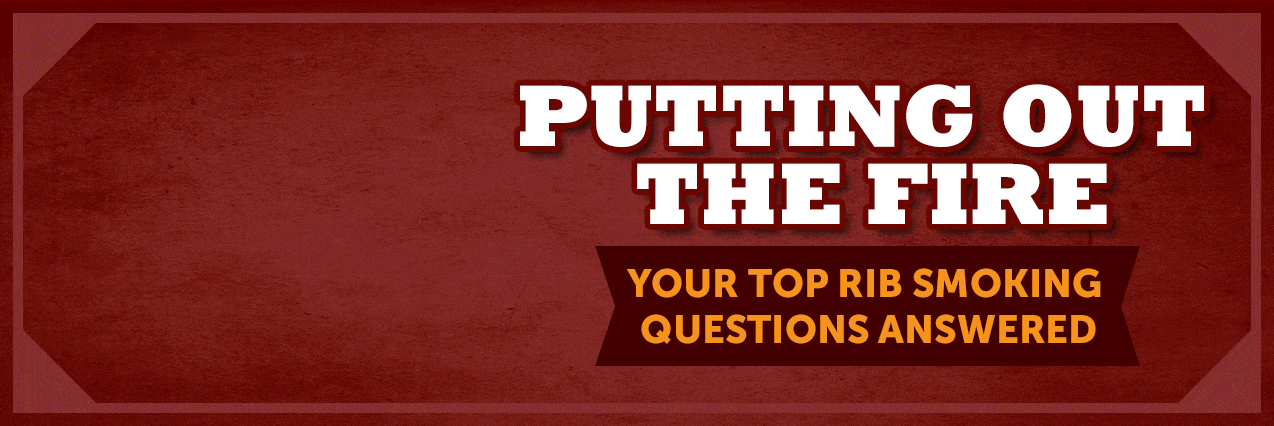
Putting Out the Fire: Your Top Rib Smoking Questions Answered
Before we wrap up this discussion on how to smoke ribs like a true Grill Master, let's answer a few of your top questions -- that is, some of the more frequently asked questions by folks who are planning to smoke ribs.
How long does it take to smoke ribs?
Smoking ribs takes four to six hours depending on the thickness of the meat. This slow, low cooking method allows the flavors of the wood, rub, and mop sauce to permeate the meat.
What Temperature Should You Smoke Ribs At?
For perfect ribs, start low and finish strong. The sweet spot for smoking ribs is generally between 200°F and 250°F, but there’s strategy behind the range. Begin your cook on the lower end — around 200°F to 215°F — during the first few hours to allow the smoke to penetrate deeply and develop rich flavor. As the ribs begin to take on color and the surface bark starts to form, gradually raise your pit temperature to 240°F to 250°F to render fat, tighten the bark, and finish the cook with that perfect bite-through texture.
This low-then-slow approach ensures maximum smoke absorption early on and a clean, caramelized finish toward the end. Don’t forget to spritz or apply your mop sauce every 45 to 60 minutes to keep the ribs moist and the surface tacky — that’s how you build a beautiful, glossy crust packed with smoke flavor.
Which side of the ribs goes up when smoking?
Putting the meat side up during smoking allows the fats to baste the ribs as the meat cooks. If you wrap your ribs during the smoking process, the meat side goes down while wrapped to steam and tenderize the meat in the juices (some folks suggest adding a few knobs of butter on top, along with a flavor enhancer like honey, then wrapping the ribs tightly and placing back on the grill, meat side down to let the butter and honey work its magic). After you glaze, return the ribs to the meat side up.
What are the best ribs for smoking?
Leaner ribs (like baby backs) work best for fast cooking methods, like straight grilling (or making party ribs). Smoking may cook up a tough, dry dinner on leaner cuts. The high-fat content of spare ribs makes them ideal for smoking. However, you are always free to experiment...and you should.
How do I choose the best ribs?
Fresh, not frozen, pink-in-color ribs promise better results. Also, look for uniform size and fattiness in ribs for even cooking. Meat with fatty marbling remains moist and flavorful during long cooking hours. Plus, the fat will render and melt away after hours in the smoker. You can always trim away some of the top fat, but choosing ribs that look fattier will ensure you have great marbling inside (remember: fat = flavor!).

Getting the Party Started: Smoking Those Ribs
Ready to play with fire, create some smoke and turn up the summer heat in your backyard?
We hope these tips on smoking ribs inspire you to step behind the grill and take charge. Armed with information and resources, you are sure to be ready.
For more incentives, sign up for our monthly barbecue box. Additional tips await you on how to smoke ribs, grill, and more!















